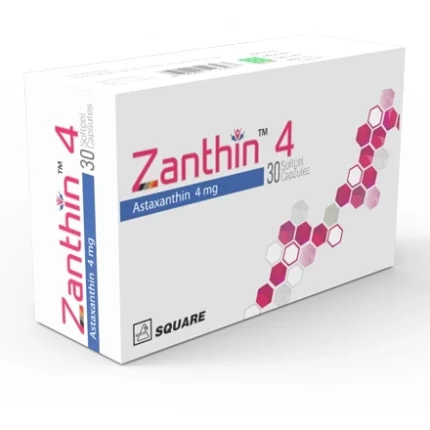Opton 20 Capsule
70.00৳ Strip
- Opton is a proton pump inhibitor used for:
- Treating chronic heartburn and GERD
- Healing erosive esophagitis and ulcers
- Eradicating Helicobacter pylori infection when combined with amoxicillin and clarithromycin
- It works by targeting the H+/K+-ATPase enzyme for effective acid control
- Available in both oral and intravenous forms
- Provides immediate relief and supports long-term management of acid-related conditions
 Brand
Brand
|
Beximco Pharmaceuticals Ltd |
|---|---|
 Generics
Generics
|
Esomeprazole |
 Type
Type
|
Tablet |
Indications
Opton is prescribed for:
- Alleviating chronic heartburn and GERD symptoms
- Healing and maintaining the healing of erosive esophagitis
- Eradicating Helicobacter pylori infection in combination with amoxicillin and clarithromycin in duodenal ulcer patients
- Managing Zollinger-Ellison Syndrome
- Treating acid-related dyspepsia
- Addressing duodenal and gastric ulcers
Pharmacology
Esomeprazole, a proton pump inhibitor, effectively reduces gastric acid secretion by targeting the H+/K+-ATPase in gastric parietal cells. As the S-isomer of omeprazole, esomeprazole offers superior acid control compared to racemic proton pump inhibitors.
- Absorption: Esomeprazole is delivered in an enteric-coated pellet form. Peak plasma levels are reached in about 1.5 hours, with a dose-dependent increase in plasma concentration. Systemic bioavailability is around 90% with daily dosing compared to 64% after a single dose. Food intake decreases the AUC by 33-53%, so it should be taken at least one hour before meals.
- Distribution: About 97% of esomeprazole binds to plasma proteins. The volume of distribution at steady state is approximately 16 L.
- Metabolism: Metabolized extensively in the liver by CYP2C19 and CYP3A4, with CYP2C19 mainly responsible for forming hydroxy and desmethyl metabolites, and CYP3A4 forming sulphone metabolites.
- Excretion: The elimination half-life is around 1–1.5 hours. Less than 1% is excreted unchanged in urine, while about 80% is excreted as inactive metabolites in urine, with the remainder in feces.
Combination Therapy with Antimicrobials
When combined with clarithromycin (500 mg twice daily) and amoxicillin (1000 mg twice daily) for 7 days, esomeprazole 40 mg once daily increases its AUC and Cmax by 70% and 18%, respectively. This combination also raises the levels of 14-hydroxyclarithromycin by 19% and 22%, though this increase is not clinically significant.
Dosage
- Oral Dosage:
- Healing Erosive Esophagitis: 20-40 mg daily for 4-8 weeks. If needed, extend treatment by an additional 4-8 weeks.
- Maintenance: 20 mg daily.
- Symptomatic GERD: 20 mg daily for 4 weeks. An additional 4 weeks may be needed if symptoms persist.
- Helicobacter pylori Eradication: 40 mg daily for 10 days in combination with amoxicillin and clarithromycin.
- Zollinger-Ellison Syndrome: 20-80 mg daily, adjusted individually.
- Acid-related Dyspepsia: 20-40 mg daily for 2-4 weeks.
- Duodenal Ulcer: 20 mg daily for 2-4 weeks.
- Gastric Ulcer: 20-40 mg daily for 4-8 weeks.
- IV Injection/Infusion:
- GERD with Erosive Esophagitis:
- Adults: 20-40 mg daily, administered IV over >3 minutes or infused over 10-30 minutes.
- Pediatrics: Dosage based on body weight; 10-20 mg daily, infused over 10-30 minutes.
- Risk Reduction of Rebleeding: 80 mg IV infusion over 30 minutes, followed by a continuous infusion of 8 mg/h for 72 hours.
- GERD with Erosive Esophagitis:
Administration
- Tablets/Capsules: Swallow whole, one hour before meals.
- Oral Suspension: Dissolve contents in 15 ml of water, stir well, wait 2-3 minutes, then consume within 30 minutes. For nasogastric or gastric tubes, use 15 ml of water, mix, and administer within 30 minutes.
- IV Injection: Reconstitute with 5 ml of 0.9% sodium chloride. Administer over at least 3 minutes, and use within 12 hours.
Interactions
Opton is metabolized by CYP2C19 and CYP3A4. It does not significantly interact with other CYP enzymes or drugs like phenytoin, warfarin, or clarithromycin. However, it may affect drugs dependent on CYP2C19 and alter the absorption of drugs where gastric pH affects bioavailability.
Contraindications
Opton is contraindicated for those with hypersensitivity to any component of the formulation.
Side Effects
Common side effects include headache, diarrhea, nausea, flatulence, abdominal pain, constipation, and dry mouth. No significant differences in adverse events between short-term and long-term use.
Pregnancy & Lactation
There are no adequate studies in pregnant women. Use during breastfeeding is not well-studied; discontinue if necessary.
Precautions & Warnings
Symptomatic relief does not exclude the presence of gastric malignancy. Capsules should be taken at least one hour before meals. For those who cannot swallow capsules, mix pellets with applesauce. Antacids can be used concurrently.
Special Populations
- Pediatrics: Safety and efficacy not established.
- Geriatrics: No significant differences observed, though sensitivity in older patients cannot be ruled out.
- Hepatic Insufficiency: No adjustment needed for mild to moderate insufficiency; limit to 20 mg daily for severe cases.
- Renal Insufficiency: Minimal impact on pharmacokinetics.
Overdose Effects
High doses can cause reduced motor activity, respiratory changes, tremors, and convulsions. No specific antidote exists. Manage symptoms and consider multiple drug ingestion.
Storage Conditions
Store below 30°C, in a dry place, away from light and moisture. Keep out of reach of children.













Reviews
There are no reviews yet.